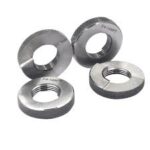Introduction: Making the Right Choice for Personal Protection
In today’s unpredictable world, personal safety has become more important than ever. Whether you’re walking home late, protecting your property, or preparing for emergency scenarios, having a reliable self-defense tool can make all the difference. Two popular options for non-lethal defense are the air gun and the taser. Both offer protection without the deadly consequences of firearms, but they differ significantly in how they operate, what situations they’re ideal for, and how the law views them.
In this blog post, we’ll take a detailed look at air guns—specifically those from the trusted Artemis brand—and tasers for self-defense, like the devices available from BNT Online’s stun gun range. We’ll compare performance, legality, practicality, and real-world usability so you can make the best decision for your safety needs.
1. What Is an Air Gun and How Does It Work?
An air gun is a type of gun that uses compressed air or gas to propel a projectile—typically a pellet or BB. Unlike traditional firearms, air guns do not rely on explosive gunpowder, making them quieter and generally safer to operate.
Key features of air guns:
- Caliber: Most commonly 4.5mm or 5.5mm pellets
- Power Source: Spring-piston, CO₂, or PCP (pre-charged pneumatic)
- Velocity: Can exceed 1000 FPS depending on the model
- Usage: Target shooting, pest control, sport shooting, and limited self-defense
The Artemis air guns are known for their precision, build quality, and innovation. With models ranging from entry-level pistols to high-powered rifles, they offer something for every shooter.
2. What Is a Taser and How Does It Work?
A taser is a device designed to incapacitate an attacker by delivering an electric shock. It works by firing two prongs that remain connected to the device via wires, transmitting high-voltage, low-amperage electricity to temporarily disrupt voluntary muscle control.
"Give thanks to the Lord for He is good: His love endures forever."
Key features of tasers and stun guns:
- Voltage: Typically ranges from 10,000 to several million volts
- Function: Overwhelms the body’s nervous system for a few seconds
- Range: Some tasers shoot up to 4-5 meters, while stun guns require direct contact
- Usage: Personal self-defense, law enforcement, home security
The tasers and stun devices at BNT Online are compact, effective, and easy to carry—making them ideal for urban or close-quarter defense.
3. Air Gun vs Taser: Head-to-Head Comparison
Feature
Air Gun
Taser/Stun Gun
Range
Up to 50 meters (depending on model)
Up to 5 meters (taser) or point-blank (stun gun)
Lethality
Potentially harmful if misused
Non-lethal, designed to incapacitate
Ease of Use
Requires aiming, loading, maintenance
Simple point-and-shoot or contact
Legal Restrictions
Varies by type and muzzle energy
Regulated, but generally legal for self-defense
Reusability
Multiple shots per session
Limited shots (taser) or requires battery recharge
Verdict: Choose an air gun if you’re looking for multi-purpose use (pest control, practice, and home defense). Opt for a taser or stun gun if you want something quick, easy, and specifically designed for stopping an attacker.
4. Use Cases for Air Guns
Home Defense
While not as powerful as firearms, high-velocity air rifles (like the Artemis series) can deter intruders or stray animals when used effectively.
Pest Control
A silent air gun is ideal for controlling small pests like rodents or birds without alarming the neighborhood.
Target Shooting
Whether for sport or skill-building, air guns are excellent for precision shooting with minimal noise and cost.
Legal Self-Defense (to some extent)
While not always categorized as self-defense weapons, a well-aimed shot from a powerful air gun can stop a threat or serve as a warning.
Popular Artemis models at BNT include both pistols and rifles in CO₂ and PCP formats. Explore Artemis air guns here.
5. Use Cases for Tasers and Stun Guns
Personal Self-Defense
Tasers are extremely effective in close confrontations. A quick jolt can incapacitate an attacker long enough for you to escape or call for help.
Urban Safety
Ideal for commuters, joggers, or late-night workers, tasers fit easily in pockets or handbags.
Non-Lethal Protection
Tasers and stun guns provide peace of mind without the legal implications of using deadly force.
Women’s Self-Defense
Compact and discreet, tasers are especially popular among women seeking non-lethal protection without the need for firearm training.
Check out compact, rechargeable, and high-voltage tasers at BNT Online’s stun devices page.
6. Legal Overview in South Africa
Air Guns:
Air guns under a specific muzzle energy threshold are legal to own without a firearm license. However, it’s essential to:
- Use them only on private property or designated shooting ranges
- Avoid aiming or firing in public areas
- Secure them properly during transport
Artemis air guns, when used responsibly, are compliant with these regulations.
Tasers/Stun Guns:
Stun guns and tasers are legal for personal use in South Africa. However:
- They cannot be used aggressively except in clear self-defense
- Selling to minors is prohibited
- Misuse may result in criminal charges
Always verify the voltage and make sure it falls within the acceptable range allowed by law.
7. Training and Safety Tips
Regardless of your choice, safety and proper training are non-negotiable.
For air guns:
- Never point at people unless in self-defense
- Store unloaded and in a locked case
- Use protective eyewear during shooting practice
For tasers:
- Practice activating and deactivating the device
- Ensure battery levels are maintained
- Don’t test fire it unnecessarily—it wastes charge and can degrade components
YouTube tutorials, certified instructors, and practice targets can help sharpen your skills.
8. Top Picks from BNT Online
Top Air Gun Pick: Artemis CP2 CO₂ Air Pistol/Rifle Kit
- Dual configuration (pistol and rifle)
- Adjustable sights and stock
- Great for beginners and seasoned shooters
- Lightweight and reliable
Top Taser Pick: Rechargeable Mini Stun Gun with LED Flashlight
- Compact and powerful
- Rechargeable battery
- Built-in flashlight for night safety
- Ideal for women and solo travelers
Shop stun guns and tasers here
Conclusion: Equip Yourself with the Right Self-Defense Tool
Choosing between an air gun and a taser depends on your environment, comfort level, and what kind of threat you’re preparing for. Air guns, especially from Artemis, offer versatility and long-range deterrence, while tasers provide quick, non-lethal protection during close encounters.
Whichever tool you choose, ensure it’s sourced from a trusted dealer like BNT Online, where quality, legality, and customer support come standard. Your safety is in your hands—equip yourself wisely.
Frequently Asked Questions (FAQ)
1. Do I need a license to own an air gun in South Africa?
No, as long as the air gun falls below a specific power threshold (under 8 joules), you do not need a firearm license. However, use must be responsible and on private property.
2. Can I carry a taser for protection in public?
Yes, tasers and stun guns are legal for self-defense, but using them without cause can result in legal consequences. Carry them discreetly and only use them in self-defense.
3. What’s better for beginners: air gun or taser?
For straightforward personal defense, tasers are better suited for beginners. Air guns may require more handling, aiming, and maintenance, though they are more versatile.
4. Are air guns powerful enough to stop an attacker?
Some high-powered air rifles may act as a deterrent, but they are not designed for guaranteed incapacitation. Tasers are more effective in that regard.
5. Are tasers rechargeable?
Yes, many stun guns and tasers today come with built-in rechargeable batteries, making them easy to maintain and cost-effective over time.
6. What if my air gun or taser breaks—does BNT offer support?
Yes, BNT Online provides product warranties and customer service support. Always keep your purchase receipt and contact them for assistance.







